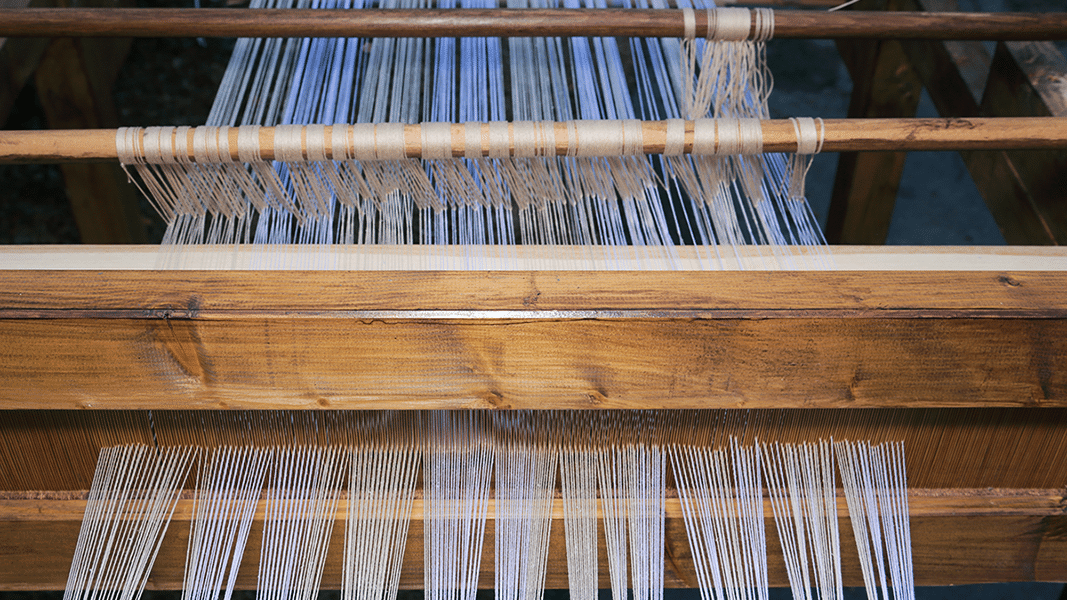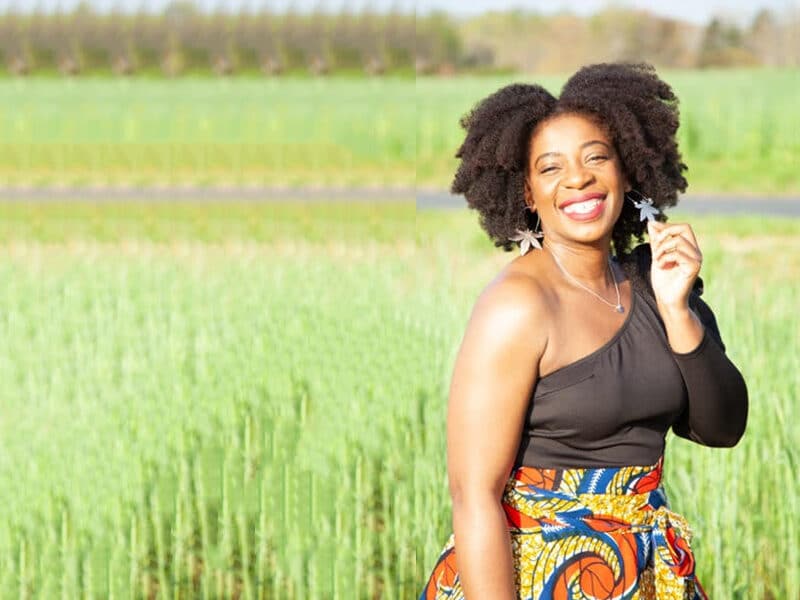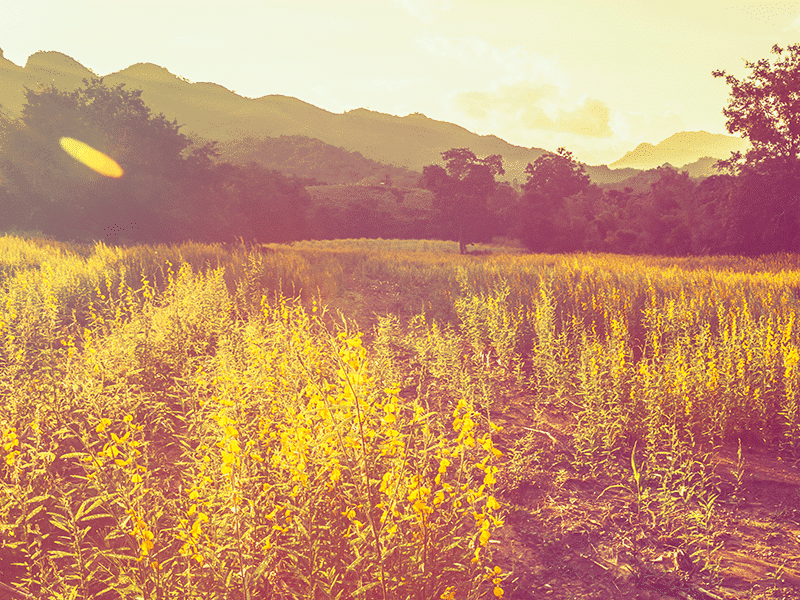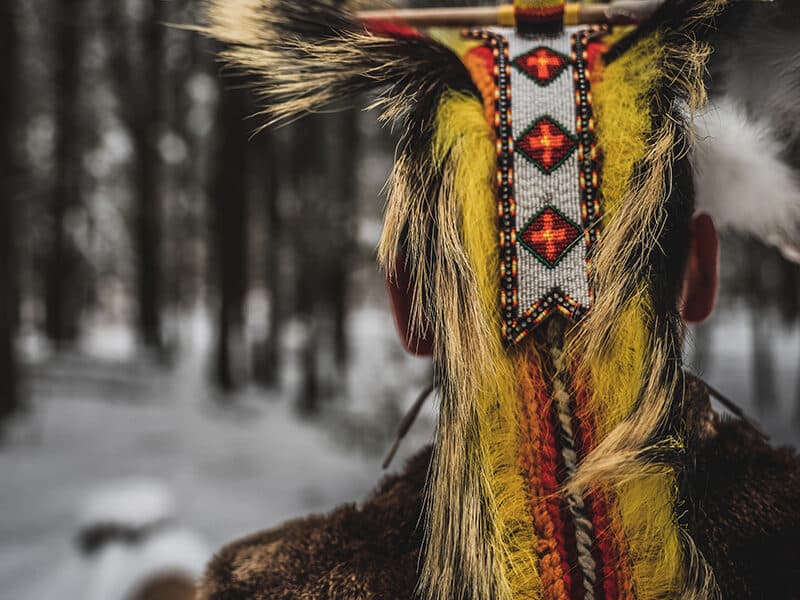At first glance, Cannabis Textiles is a quiet, unassuming book, without slick, staged photos or superlative descriptions of indigenous cultures. Such simplicity reflects the book’s inner beauty, which documents the history of a disappearing handcraft, that of traditional hemp cultivation and fabric production.
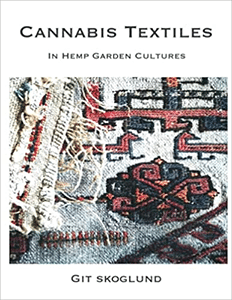
Skoglund’s book focuses primarily on indigenous hemp cultures in Europe and Asia. Her passion for hemp was lit while pursuing her Master’s thesis studies at the Swedish School of Textiles, University of Borås and in Uppsala, Sweden in the 1970s, when she discovered a significant absence of recorded information on traditional hemp craft.
“It was almost taboo to talk about hemp, because it was intimately connected to drugs and was banned in Sweden [until 2003],” she told Project CBD.
Skoglund began to weave with hemp yarn herself, while scouring the historical record for mentions of the craft. She used DNA and microscopic testing methods to determine the fiber content of a number of antique textiles kept in museums and archives, and found many that were made completely or partially from hemp fibers.
A Bast Fiber Plant
Long before 1842, when William O’Shaughnessy brought psychoactive cannabis indica from India to the West, a type of cannabis commonly known as hemp was grown in kitchen gardens across Europe and East Asia, “near castles and monasteries, mansions and simple farms,” writes Skoglund. Hemp, a bast fiber plant, was cultivated for its seeds and medicinal properties, but mainly for its fiber. Fiber from other bast plants, such as flax and hops, was often blended with hemp fiber.
Skoglund details how hemp fabrics have been made as far back as neolithic China, and for centuries were used in Europe and Asia to make everyday clothing, as well as for ritual purposes such as religious ceremonies, weddings, funerals, etc. Hemp cottage industries were popular in medieval Europe, and were often overseen by professional craft guilds.
“Textile production is about botany,” says Skoglund, “and is based on interdisciplinary research between horticultural and textile history.” The history of hemp textile craft, she says, is one of many examples of how domestic work, especially that done by women, was considered trivial and was not well-documented. Priests or other prominent men, she writes, “recorded our history, but they had no insight into the household production of textiles at all. Instead, they focused on economics and the goods they wanted to produce.” Skoglund is dedicated to changing that oversight, at least as it concerns hemp fiber.
“A Hundred Operations”
In medieval Italy, hemp fabric was known as quello dello cento operioni, or “that of a hundred operations,” an apt name given the many steps it took to make it. Skoglund’s straightforward descriptions of growing, harvesting, drying, soaking, retting, pounding, scutching, hackling, spinning, weaving, bleaching, mangling, and dyeing have a strangely calming effect. Each step is visceral and earthy, part of a complex, intimate human relationship with plants rarely seen in the post-industrial 21st century.
Contrary to prevailing assumptions that hemp-fiber fabric is universally heavy and coarse, homespun hemp linen can be quite fine, with a high thread count and a soft hand. The key to quality is the knowledge and skill of the producer. Skoglund describes how in Europe, only young male hemp plants were chosen for producing high-quality fabric. They were grown in sunny, sheltered locations, often in kitchen gardens, under conditions that kept the plants thin and spindly, with flexible stalks that yielded the finest fibers. Taller, denser female hemp plants were grown for seeds, their coarser fiber made into rope, sacks, sailcloth, rugs, tarps, saddlebags, etc. The word canvas comes from the French canvasse, meaning “cannabis cloth.”
Skoglund explains how after harvest, hemp stalks are retted, typically by leaving them lying in the field or soaking for a couple of weeks in the clear water of a lake, pond, or stream, where naturally-occurring anaerobic bacteria loosens and separates the fibers from the woody core. The hemp fibers are then dried and bleached in the sun, broken by beating them with a mallet or scutching knife, hackled to comb and align them, and given a last brushing to remove any rogue stems or other debris before twisting them into roving to be spun by hand, often with a drop spindle. The finished hemp yarn is traditionally woven into fabric on treadle, frame or backstrap looms.
Cotton & Synthetic Fiber
Hemp grows in most climates but thrives in the fertile soil found in river valleys, especially near limestone outcroppings. This fast-growing botanical needs only moderate water and nitrogen, helps remediate contaminated soils, and absorbs CO2. Hemp fabric is resistant to stain and rot, naturally antibacterial, UV protective, and biodegradable.
Hemp is also stronger and more durable than cotton, now the most widely-produced non-food crop in the world. Cotton, historically a slave-labor crop, has had a devastating social and environmental impact, requiring vast amounts of water, chemical fertilizers, and pesticides. In contrast, hemp’s many sustainable, eco-friendly attributes make it a valuable ally in the climate crisis era.
Prior to the invention of the cotton gin in New England in 1793, American wives and mothers organized spinning bees with hempen thread to clothe the revolutionary army. Despite its impeccable patriotic pedigree, industrial hemp became collateral damage in the US government’s war on drugs. Since the passage of the 2018 Farm Bill, which re-legalized US hemp cultivation, there has been renewed interest in hemp textiles and other hemp fiber products. But compared to growing hemp for CBD extraction, hemp textiles have gotten short shrift in the US and Europe. And much of the hemp clothing that’s currently mass manufactured in Asia is artificially retted and drenched in noxious chemicals.
For thousands of years, humans covered their bodies with plant and animal fibers. Yet now, many of us walk around literally clothed in petrochemicals. According to a 2022 report by Changing Markets Foundation, 69% of the fiber in today’s fabrics (polyester, acrylic, nylon, spandex, etc.) are synthetically produced from fossil fuels.
Much of this fabric is made by exploited labor into “fast fashion” garments that shed synthetic microfibers, wreaking havoc as they sneak into our bloodstream and lodge in our bodies while making their way to the furthest reaches of the planet. Fiber-shedding from fossil fabrics is responsible for a significant percentage of the microplastics that have been polluting our environment, causing particle toxicity, oxidative stress, and inflammation.
Cannabis Textiles in Hemp Garden Cultures reads like a dreamy, slow-fashion antidote to the “fossil-fabric” pandemic.
A Living Tradition
With the advent of cheap industrial cotton and synthetic fibers, the craft of domestic hemp fabric nearly disappeared during the 20th century. Today, traditional hemp fabric is only produced by women in isolated pockets of Thailand, Vietnam, China, Turkey, and Romania — all places where Skoglund has traveled and researched.
Skoglund’s study of hemp fabric history continues. Currently, she is analyzing the hemp fibers of religious textiles found in an old Icelandic church and plans to use Strontium Isotope testing to determine their origin. But aside from the curious hobbyist trying her hand at making homegrown hemp clothing, why should we care about an ancient craft that requires so much labor?
Without banging us over the head with a drop spindle, Skoglund’s book gives us clues. By bringing to life the slow, tangible, mindful construction of garden hemp fabric, she suggests the intangible — the straw-into-gold enchantment of handcrafts and the value of everyday things measured by an algorithm that honors nature, creativity, and longevity. Skoglund’s book is a bittersweet elegy to traditional hemp cultures, yet it also challenges us to ask whether a world poisoned by plastic can make space once again for the manifold magic of this amazing plant.
Melinda Misuraca is a Project CBD contributing writer with a past life as an old-school cannabis farmer specializing in CBD-rich cultivars. © Copyright, Project CBD. May not be reprinted without permission.
Recommended Readings
Hemp Farming While Black
Can rural African Americans overcome centuries of oppression to forge a new agrarianism with cannabis?
Hemp: From Mythos to Monoculture
CBD has both energized and blunted the new hemp economy.
Reviving Hemp in Menominee Country
Part 1 of a 5-part series on hemp and Native American sovereignty.

